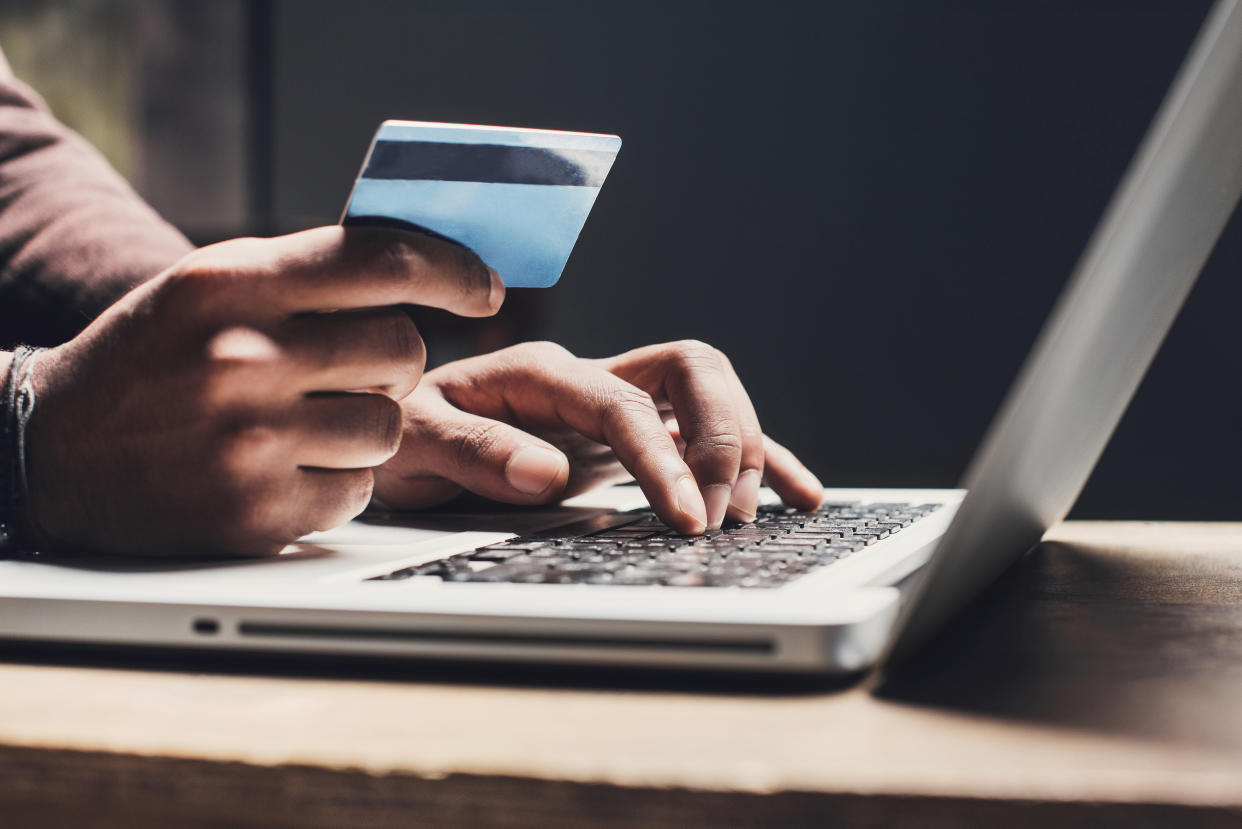What are the signs of an online shopping addiction?

If you find yourself scrolling mindlessly on ASOS or Amazon on the sofa, you’re not alone.
Online shopping is beating the high street in the UK, with 51% of consumers saying they prefer to shop from the comfort of their home instead of at physical stores. A further 55% of consumers said they shop more online now than they did last year, on average buying something online six times a month.
With smarter devices and faster internet access, online shopping is far easier to access than it used to be.
And with so many deals on offer, it can be hard to resist treating yourself now and again. However, research suggests that being unable to stop buying things shouldn’t be taken lightly.
READ MORE: How to teach your children about the value of money
Research suggests that as many as one in 20 people in developed countries may suffer from shopping addiction, otherwise known as compulsive buying disorder. However, the issue isn’t always taken seriously, often being laughed off as the sign of a shop-a-holic instead. So how do you know if your online shopping habits are a problem or not?
According to the healthcare provider the Priory, compulsive shopping disorder - or oniomania - “is a socially and financially damaging psychological condition”.
READ MORE: How to know your worth and be paid it
“While many people like to shop during time off, at weekends, or during seasonal holiday periods such as at Christmas, shopping addiction involves an overwhelming urge to shop and subsequently spend until it begins to adversely affect your life,” the website reads.
“This may include overspending and taking out several store credit cards in order to be able to purchase items, even if you may be aware that this could incur long-term financial debt.”
A shopping addiction can be an emotional rollercoaster too, which can leave you thinking about shopping all get, getting anxious before a purchase or experiencing a high after buying something. This may be followed by a sense of guilt or shame.
“Usually perceived as a positive activity and a pleasurable distraction away from work or studies, people developing a compulsion to shop may be more prone to wanting to repeat the feel-good reward that buying a product creates in our brains,” the Priory explains.
“Much like an addiction to drugs or alcohol, shopping addiction happens because of a desire to make the brain release ‘happy chemicals’ such as dopamine that are involved in all activities related to shopping, from entering a shop and browsing through to the ultimate act of purchasing.”
Although a shopping addiction may differ from other addictions, some associated behaviours are the same. It’s an involuntary and ultimately destructive behaviour which can lead people to hide it from family and friends. In turn, this can lead to social isolation.
READ MORE: How to spot microaggressions at work
“I ended up deep into my overdraft because of the happy feeling I got when I bought something new. I wasn’t happy at the time with my job and there were problems at home too, so shopping felt like an escape. Something new made me feel better about myself, which made it a hard habit to break,” says Laura*, 36.
However, one key issue is the problem isn’t widely recognised as a condition - which means many people don’t seek or receive help or treatment. There are many factors that contribute to the problem, including that shopping may be a way of dealing with stress or psychological pain.
“Modern technology has made shopping extremely accessible and convenient, with the potential of sending problematic shopping into overdrive - especially along with sociocultural factors such as social media, credit cards, and advanced marketing,” says Cecilie Schou Andreassen, a doctor of psychology and a clinical psychologist specialist, who heads the research project Shopping Addiction at the University of Bergen.
In 2015, the researchers developed a new and unique method to measure shopping addiction: The Bergen Shopping Addiction Scale. The first of its kind, it is based on core addiction elements recognised as diagnostic criteria for other addictions.
“Our research indicates that people who score high on extraversion and neuroticism are more at risk of developing shopping addiction,” she adds. “Extroverts, typically being social and sensation seeking, may be using shopping to express their individuality or enhance their social status and personal attractiveness. Neurotic people, who typically are anxious, depressive, and self-conscious, may use shopping as a means of reducing their negative feelings.”
Shopping addiction can also be related to symptoms of anxiety, depression and low self-esteem, research has found. As with other addictive behaviours, though, the underlying causes of compulsive shopping can be treated successfully, by different types of therapy or specialist addiction programmes.
Crucially, it’s important to note that a shopping addiction isn’t the same as simply enjoying shopping - and it’s different to just enjoying a bit of “retail therapy”.

